Menu
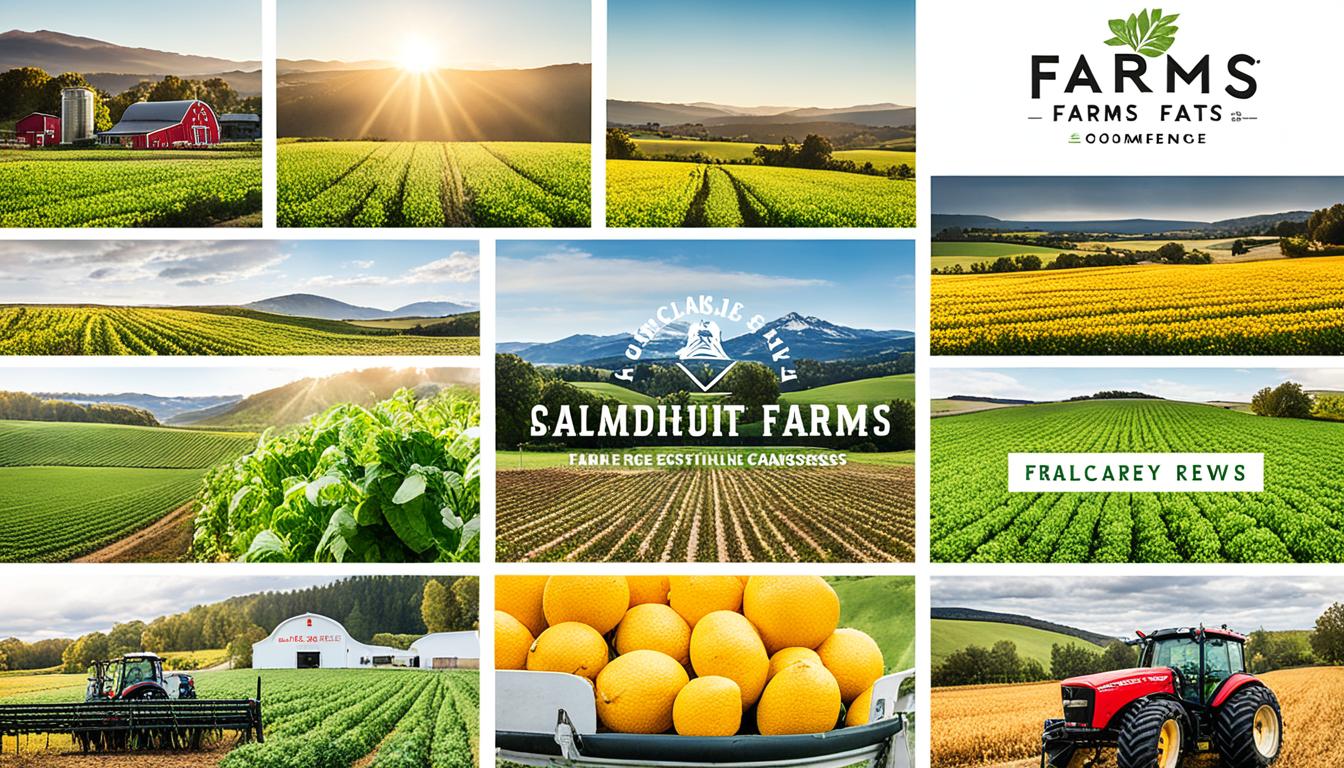
Farmer Boy runs an e-commerce site with over 2,300 corporate accounts. All transactions happen online. This shows how e-commerce is changing the farming world. Big brands like Sephora and Allbirds made the move to selling directly to customers. Now, farm e-commerce examples are showing the way forward.
The Farmer’s Dog is making a big impact by delivering millions of meals each month. It uses smart digital marketing and sales strategies to reach a wide audience. Care/of is another success story, reaching a valuation of $225 million. It did this by using content marketing and being active on social media. These stories show big growth opportunities in agriculture through online sales.
The digital revolution has changed farming by bringing agriculture online. This has led to e-commerce becoming a driving force in agriculture. It leads to increased sales, brand growth, and a wider audience reach. I will explain how these advancements are key for today’s farms.
E-commerce in agriculture is more than a new sales channel. It gives farmers direct access to customers, removing the need for middlemen. By using online platforms, they can improve their sales strategy, make their products more visible, and set competitive prices. An example is Bloomfield Farm in Charlotte, Vermont. They use a unique way of land ownership and e-commerce to make their farm products more accessible.
The pandemic made online sales essential for farms. With traditional retail options limited, many farms turned to e-commerce to keep their businesses running. This fast adaptation not only shows agriculture’s resilience but also the potential of online sales. For instance, Bloomfield Farm saw great success, proving that e-commerce can connect farmers and consumers even during crises.
There are challenges too, especially with shared land ownership. Decision-making and managing resources can be complex. Farms must carefully plan, with regular reviews of agreements and clear leadership. Also, having the right insurance and focusing on sustainability are crucial for success.
Agricultural e-commerce offers extensive opportunities for farmers, including access to public support programs and participation in producer cooperatives. These initiatives promote shared capital usage and infrastructure maintenance, essential for the sustained growth of farm enterprises.
| Farm | Location | Advantages of E-commerce |
|---|---|---|
| Bloomfield Farm | Charlotte, Vermont | Broader market reach, cost sharing, secure tenure |
| Champlain Valley Cohousing Development | Vermont | Affordable land access, coordination of property use |
In conclusion, e-commerce is changing farming for the better. By embracing digital solutions, farmers can improve their businesses. This is key to their growth and survival in a competitive market.
Farmer Boy started an amazing journey into farm e-commerce transformation. It’s a well-known supplier in the agricultural world. Their customers range from big commercial farms to family ones and even hobbyists.
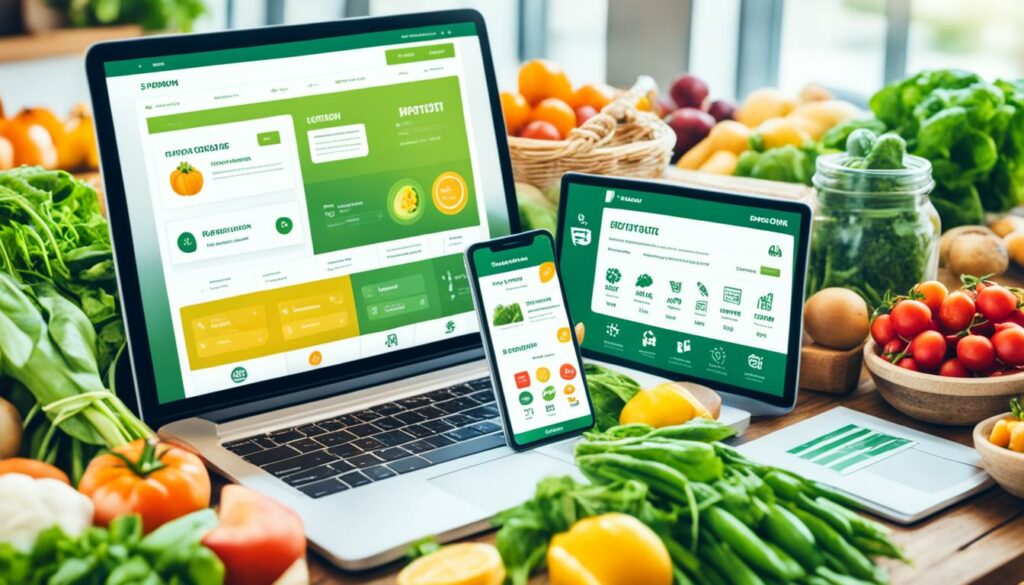
Farmer Boy hit big problems with its old platform. It couldn’t show all their products and services right. This made buying hard for business customers, leading to slow orders. So, Farmer Boy couldn’t grow its customer base as well as it wanted.
To get past these issues, Farmer Boy switched to BigCommerce in agriculture. They could now deal better with all types of buyers in big companies. This change also meant they could give faster and more accurate price quotes to business buyers. This made their business run much better.
Moving to BigCommerce was a game-changer for Farmer Boy. Their new site brought in more sales and bigger average orders. They increased how many people they could reach too. The better chat feature helped sell more by improving how they talk to customers.Now, Farmer Boy is everywhere, outdoing their rivals. This success shows how powerful farm e-commerce transformation can be in farming sales.
| Aspect | Legacy Platform | BigCommerce |
|---|---|---|
| Customer Reach | Limited | Expanded |
| Sales Growth | Stagnant | Increased |
| Order Value | Low | Higher |
| B2B Interaction | Inefficient | Enhanced |
Digital marketing has changed the game for farm sales, leading to many successful stories. It’s clear that digital marketing has transformed the way farming businesses work. Now, they blend traditional methods with new online strategies.
Rural e-commerce success comes from new and creative ideas. Websites selling farm products wisely place products in different categories. This helps meet all kinds of farming needs.
For example, customers can easily find things for planning land use or taking care of animals. They group items like Crops and Energy & Environment. By doing this, they help all kinds of farmers.
Look at Warby Parker and Glossier for proof of digital marketing’s power. They’ve used popular people to market, created fun content, and built strong communities. Farm e-commerce is also using these smart approaches.
Outfits that help with soil health and reducing waste are a perfect example. They’ve found that being green makes people want to buy from them. This is a big draw for customers.
Sales in specific crop areas like Corn and Fruit show a clear, targeted strategy. This approach meets farmers’ exact needs. It’s a strong way to attract and keep customers, as proven by real examples.
Offering discounts points to a tough market where every sale matters. A well-thought-out mix of strategies is key to success. It guides farming businesses towards doing well and being sustainable.
The Farmer’s Dog shows us how a small start can grow into a big farm business. This took shape by selling fresh, quality food for pets in 2015. They aimed to be a better choice than the usual dog foods.
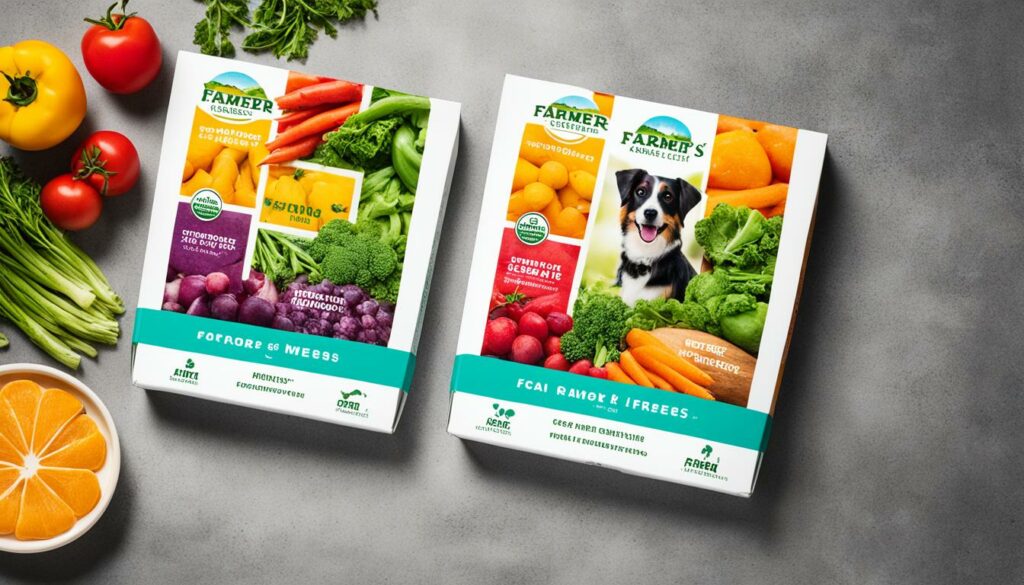
Very quickly, the company became big online. They used smart digital ads and easy ways to buy to get more customers. Their Facebook ads, reaching lots in the US, increased sales by 57%. They also smartly used Instagram and TikTok to talk to millions of pet owners.
Looking at how much this company has grown tells a lot. Recently, they’ve got over 100 workers who help run things. With many in the US seeing pets as family, The Farmer’s Dog offers meals that are cheap yet good. You can get meal plans from as low as $2 a day. This includes different foods like beef, turkey, and pork, adjusted for your pet’s needs.
The Farmer’s Dog also does well because people like talking about them. They give out free trials which means you can try their meals for two weeks. This is a way to show their quality. Plus, they often offer 50% off the first order, drawing in new customers.
This business really gets how to use the internet to sell farm goods. They only sell through their website. This way, they make each meal plan special and use good-for-the-earth packaging. This makes customers happy and keeps them coming back.
Care/of quickly became worth $225 million. This shows how well farming and selling online can go together. They got there in just six years. This was thanks to using smart digital marketing and creating great content.
They made a fun quiz that helped people find the right products for them. This really made customers feel special and led to a great shopping experience. By adding interesting stories to the mix, Care/of became a stand-out choice for many.
This rise in value teaches us a lot. It proves that getting to know your customer well and sharing interesting stories can make a huge difference. It also shows how important the internet is for getting your brand known and loved.
If we look at how the Dollar Shave Club and Warby Parker started, Care/of’s method really stands out. Using online tools the right way can take any farming business far. Their success points the way for others in farming to do well with digital tools.
Happy Box’s journey from a side project to a big player in e-commerce is amazing. It shows how farm e-commerce can grow a lot. At first, it was a small idea. But, during Covid, it grew 10 times. This shows quick thinking can really help a farm-related business climb to the top.
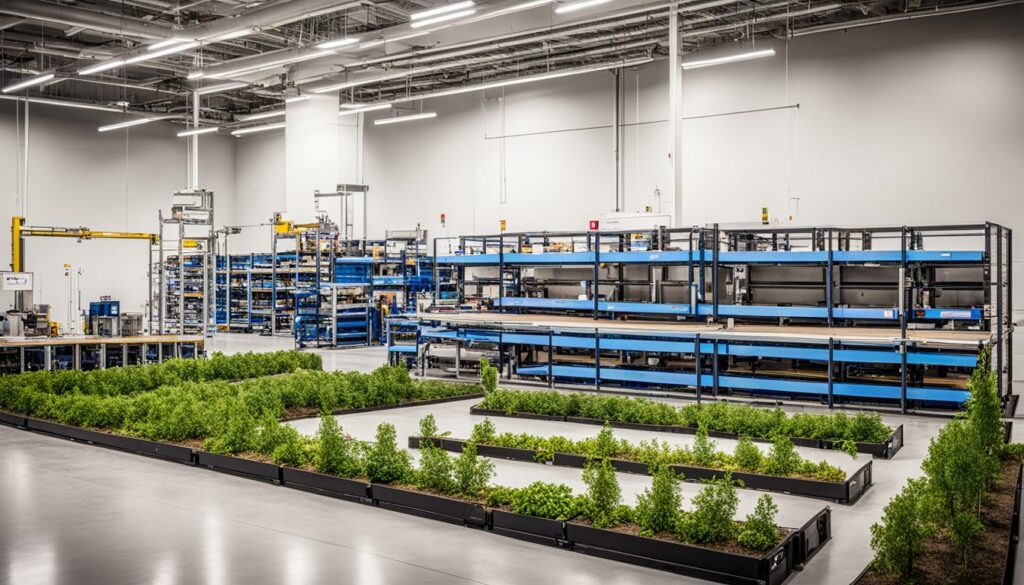
Happy Box didn’t just get lucky on its path to success. The team used smart marketing and saw where they could grow. This story shows how powerful the internet can be for farms. It helps them reach more people and make a bigger difference.
Farm businesses can learn a lot from Happy Box’s growth story. It points out the value of digital marketing and strong business plans in tough times. Also, it proves that farm e-commerce can be very successful. It sets a high standard for new businesses.
| Company | Achievement | Timeframe |
|---|---|---|
| The Farmer’s Dog | Millions of meals delivered monthly | 6 years |
| Care/of | $225 million valuation, acquired by Bayer | 6 years |
| Dollar Shave Club | 4.75 million views in 3 months, 27 million to date | 3 months |
| Happy Box | 10x growth rate | During Covid pandemic |
| SNOW® Teeth Whitening | $100 million in sales | 3 years |
The Happy Box growth story is inspiring for any business that wants to grow online. It shows that changing from a small idea to a big business takes more than just dreams. It’s about using e-commerce cleverly in the farming world. This success opens doors for farm e-commerce businesses to do well and grow.
Bloom & Wild has shown that new ideas work well in selling flowers online. It focuses on making customers happy and getting its name out there. They do this by changing what they share on social media and how they invite others to join in. Doing this has made them a big player in the flower market online.
They don’t just sell one-off bunches, though. Bloom & Wild lets people sign up for regular deliveries. This way, they’ve built a group of customers who really trust the quality and look of what they send. It’s a new way to do business that fits with how other online farms succeed, by getting used to selling on the internet.
Looking at the bigger picture, cutting flowers are doing well in sales over the years. People are buying and selling more worldwide, showing the power of good shipping and smart deals with others. This helps keep the flower business growing online.
| Year | Import Volume (Metric Tons) | Export Value (USD Billions) | Average Selling Price (USD/kg) |
|---|---|---|---|
| 2017 | 2,345,600 | 34.2 | 2.67 |
| 2018 | 2,412,300 | 36.1 | 2.71 |
| 2019 | 2,501,200 | 37.8 | 2.75 |
| 2020 | 2,564,000 | 39.0 | 2.79 |
| 2021 | 2,653,000 | 41.2 | 2.83 |
Bloom & Wild does well because it’s set up to quickly respond to the flower market’s needs. They also make sure to get flowers that are in season and grown nearby. This helps them keep customers who care about the earth happy. Plus, this way of working makes their business stronger over time.
Understanding the online market for farm products is vital for your success. E-commerce has grown, especially after the pandemic. Today’s consumers are digital-savvy. So, you need to use the right strategies.
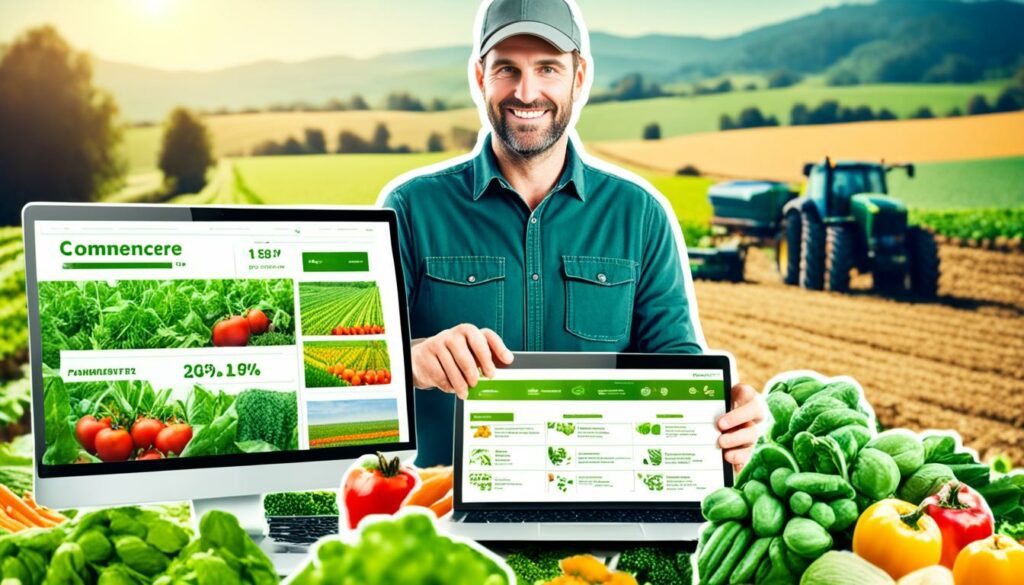
First, you need to know your customers. What do they want? How do they like to shop? This info helps you offer the right products and market effectively. It also builds long-term customer loyalty.
Building trust in farm e-commerce is essential. Keeping your product quality high and using strict quality checks is key. This earns customer trust. Farmers in e-commerce often get better financial ratings. So, talking about your quality checks in your marketing is important.
Social media is gold for selling farm goods online. It’s not just about selling, but telling a story. Use platforms like Facebook, Instagram, and Twitter to show the journey of your products. This connects you with customers through genuine content and interactive posts. It helps build a strong brand community.
Getting into e-commerce can really boost your farm’s financial health. For instance, in China, e-commerce has helped villages grow economically. So, make sure to know your audience, keep your products top-notch, and use social media well. This will help make your online farm business a success.
Exploring farming online marketplace case studies gives us key insights into success. The agricultural e-commerce market is growing massively. It could jump from $9.7 billion in 2021 to $17 billion by 2031. This big growth shows why it’s so important to have strong e-commerce strategies in farming.
In successful farming online marketplaces, fertilizers and pesticides are highly sought after. They are the top products. The B2B section, selling to businesses, makes the most money. The Asia-Pacific area leads in making profits, with North America and Europe following behind.
Take Agrostar and Agrofy for example. They got a lot of money from investors, like Accel and Yara Growth Ventures. Agrostar got $124 million. Agrofy got $66 million. This money helped them make good e-commerce strategies. These strategies kept them successful in the market.
Gramophone, BigHaat, and others also had significant funds. This shows investors believe in their e-commerce ideas. It’s clear that to succeed, an online marketplace for farming must be smart and meet the needs of farmers and buyers.
But, there are still big challenges, especially where e-commerce isn’t common. For example, most Indian farmers don’t know much about e-commerce. A survey showed all farmers faced problems like bad prices, little storage, and not knowing computers well. Fixing these issues is key to making e-commerce grow. Good e-commerce plans can help fix these problems.
| Company | Funding Secured | Key Investors |
|---|---|---|
| Agrostar | $124 million | Accel, Bertelsmann India Investments, Rabo Frontier Ventures |
| Agrofy | $66 million | Yara Growth Ventures, Capria, SP Ventures |
| Gramophone | $23 million | Z3Partners, Asha Impact, Siana |
| BigHaat | $20 million | BlackSoil, JM Financial Private Equity, Beyond Next Ventures |
| Agrim | $15 million | Axis Bank, Kalaari Capital, Omnivore |
| Tarfin | $14 million | Yara Growth Ventures, Quona, Elevator Ventures |
From these studies, we learn that being adaptable and having strong funding matter a lot. Also, having specific strategies for your market is crucial. As online farming sales grow, it’s important to use these lessons. They will help us succeed in the changing world of agriculture marketing.
Digital marketing is key for farm e-commerce today. It boosts visibility and sales significantly. Case studies show how businesses in various fields used e-commerce to grow. They reach more markets, cut marketing costs, and target both B2B and B2C market types.
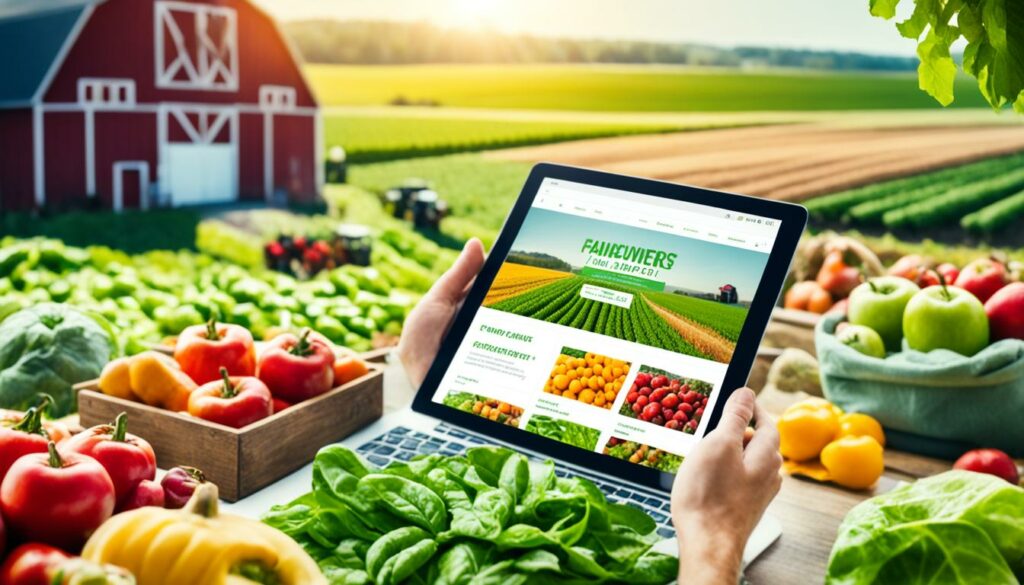
In agriculture, effective content marketing is vital for reaching customers. Brands like Casper and Lunya prove this. Their crafted content improves brand image and pulls in more customers. Farm businesses can become leaders in their field. They do this by making useful and engaging content. This approach builds trust with potential clients.
For more on content marketing’s impact, check out the E-commerce Project. It looks at 25 companies that used digital marketing well in rural areas. They achieved great success.
Influencer strategies are changing digital marketing in farm e-commerce. Brands like Gymshark and Rituals have proven this. Working with influencers can make content more authentic. This strategy can help reach more people and build a strong online presence for farm businesses.
In e-commerce, using influencers helps expand the business’ market. It cuts down on marketing costs too. Influencers connect the brand with their audience in a more trusted and efficient way.
For farm e-commerce, digital marketing and influencer partnerships are key. They are not just beneficial but crucial to succeed in today’s market.
Country e-businesses succeed by understanding rural markets’ unique challenges and opportunities. Successful cases show how using local strategies and digital marketing are key. These help businesses in villages grow in the online world.
Out of the 25 case studies completed, we saw a mix of manufacturing, services, and trade. The businesses were locally owned in rural areas, showing community projects’ value. They used different e-commerce ways, like selling to other businesses or directly to customers. This shows how being flexible helps in e-business success in the countryside.
These studies give us insights into what rural e-businesses face. For example, three providers helped businesses use e-commerce better. Their help was key, showing the importance of expert advice for e-businesses in rural areas.
Geographic dispersion showed these businesses were everywhere. This means successful countryside e-business methods can work no matter where you are.
Businesses in the studies varied in size and type, from physical shops to online-only. This shows starting e-commerce can help in big ways, no matter your business’s setup at the beginning.
E-commerce participation has shown a positive impact on the scale of digital credit available to farmers. The recorded increases—$0.922 million in digital credit and $37.49 million in total credit—illustrate the tangible financial benefits of engaging in e-commerce.
Rural China stands out with 5,425 villages doing e-commerce work. They do business worth over 1 trillion yuan yearly. This proves how big and profitable rural e-business can be.
To sum up, successful countryside e-businesses focus on the local, use smart digital marketing, and gain big from e-commerce. These findings offer hope for the future of rural e-businesses. With good planning and adjustments, success is possible.
Case studies in agrarian e-commerce are showing us how to grow in the online agricultural market. We learn about the approaches that help businesses succeed in different places and fields. I will go through key data and strategies that have brought success in this industry.
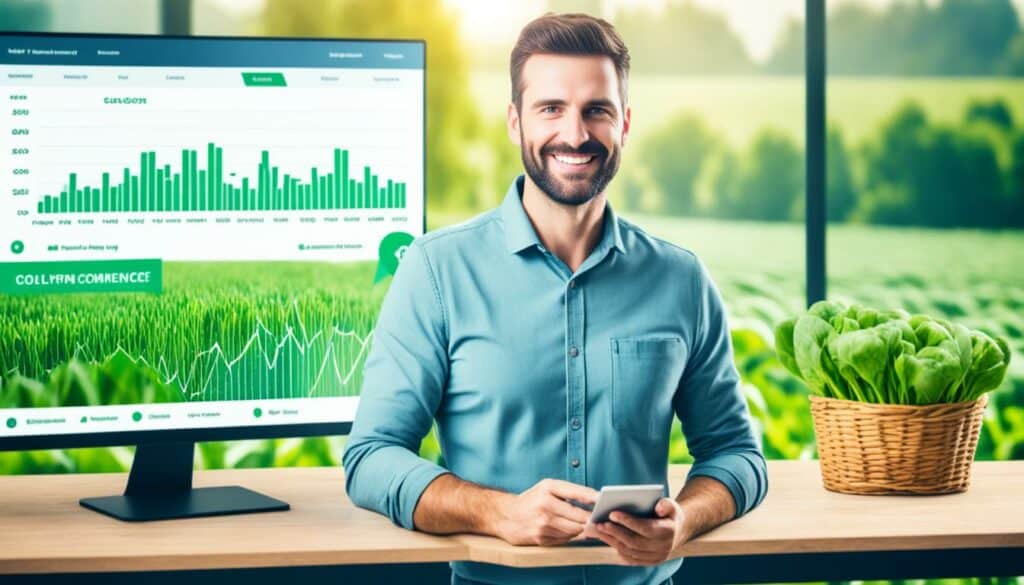
In Africa, over 33 million small farms are a vital source of food but struggle to sell their products. In Akoko Edo, 80% of harvested plantains were wasted because of poor market access. In Nigeria, both small and big farmers are finding the current e-commerce platforms unhelpful, showing a big market gap.
Quality assurance is vital but often a problem for agriculture e-commerce sites. Agrific promises to improve the quality of products through better packaging and checks. They make transactions safer for both farmers and buyers, building trust in e-commerce.
Agrific focuses on users aged 18-75, helping all from self-employed to farmers. Their platform is easy for buyers and sellers, thanks to similar account and feature layouts. They use Figma to create a flexible and scalable platform for everyone.
These cases show customer-centric experiences are key. Brands like Allbirds succeed with sustainability, while Sephora’s personal touch builds customer loyalty. Agrific’s strategies also highlight the need for easy-to-use websites, especially for older users who prefer simpler platforms like Facebook or WhatsApp.
Using these lessons could really boost online agriculture sales. It means working on getting to more markets, making sure products are good, and focusing on what customers really want. These steps are key to the growth of online agriculture retail.
| Study Findings | Insights |
|---|---|
| Lack of market access in Akoko Edo | Focus on improving distribution channels |
| Quality assurance issues | Implementing robust verification systems |
| User-friendly interfaces for diverse age groups | Designing intuitive platforms to enhance user experience |
| Importance of unique selling propositions | Developing personalised and sustainable practices |
There’s a lot changing in farming due to climate change, shifts in people’s living areas, and uneven economic growth. The farmland internet sales analysis shows us how online sales in agriculture are changing fast. The use of digital platforms has brought big changes.
Right now, only a small number of farmers are using Big Data platforms. These digital platforms could really change farming by using big data and cloud solutions in a competitive way. But, challenges like who owns the data, privacy, and how the data is used need to be tackled.
One study has looked into using digital platforms to help small farmers make better decisions. Another used a special theory to understand the needs and relationships of everyone involved in farming. This gives us insights into farm e-commerce and how digital tools are making a difference.
There are two main types of digital tools in farming: ones that are built into machines, like sensors, and those that are separate, like apps or websites. These tools are seen as either public goods, private goods, shared resources, or goods for a specific group in the farming world.
Big companies and new ones getting funding from investors are getting into using technology in farming. They offer digital tools to farmers in different ways. This gives us key insights into farm e-commerce and how digital tools are being used.
| Impact Factors | Examples |
|---|---|
| Climate Change | In 2019, heavy rainfall in the Midwest led to significant delays in planting and reduced corn and soybean yields. |
| Agricultural Practices | A study in India found that incorporating leguminous cover crops into rice-wheat systems significantly increased soil fertility and yields. |
| Pest Control Innovations | Predatory mites introduced to the strawberry industry to control two-spotted spider mites proved effective and environmentally friendly. |
Looking at online sales data can help farm businesses spot patterns and predict what e-commerce areas will grow. Following these trends helps them keep up with changes and seize new chances. This information helps businesses do well in the competitive digital farming world and encourages growth in the sector.
Rural digital marketing success stories show how technology can change farming. They let rural businesses grow by reaching more people around the world. This way, the businesses get closer to their customers and build strong bonds.
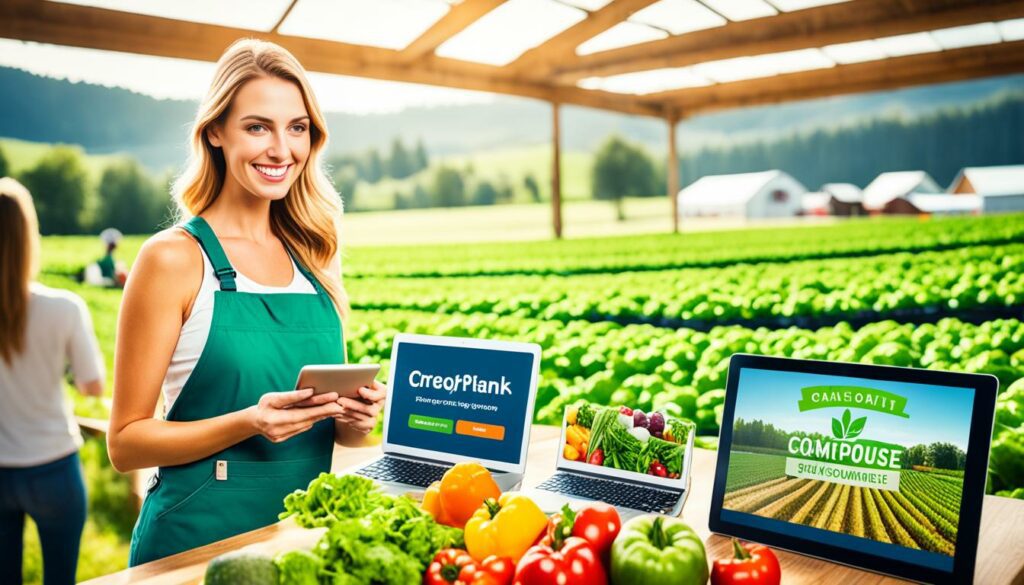
Going green in farming e-commerce has helped many businesses get bigger and better. People really like buying from farms that care for the planet. This has helped these farms keep their customers happy and loyal.
Farms are leading in eco-friendly shopping. They’re not just growing food but also trust among those who love the earth. By showing off their green thumb online, more and more eco-conscious customers are stopping by to shop.
Using the latest tech in farming marketing is making rural businesses more successful. After 30 years working the land, these businesses are seeing big progress. They’re selling more, reaching more people, and adding value to each order.
Thanks to tools like BigCommerce, selling online is easier than ever. It’s like opening a shop in the middle of a busy market. Now, talking to customers has become simple with chatting tools. This helps businesses understand and meet customers’ needs better and faster.
Also, selling online is opening the world to local merchants. It’s letting them grow their businesses and start selling beyond their own towns. Now, being in a small village doesn’t mean you can’t sell to someone in the city. All this growth is because of digital tools and having a strong presence on social media.
In the U.S., 2,300 corporate accounts are seeing big success online. They’ve focused on selling over the internet across the country. This selling is not just making more money. It’s also creating more jobs and helping the communities they’re in.
The lessons we’ve learned from these farm e-commerce cases show us how vital digital marketplaces are. They boost both sales and customer loyalty in farming. We looked at 25 different companies and found that online growth is possible for them all. We talked to three service providers, who highlighted the big role online selling plays in reaching more customers for both local and worldwide sales.
The global market for farming e-commerce is set to explode, from $9.7 billion in 2021 to $17 billion by 2031. Fertilisers and pesticides will be big sellers. Asia-Pacific will likely earn the most, with North America and Europe following. With more than 1,300 active companies, the fight is tough but shows the high level of business activity.
Agrostar, Agrofy, and others have seen big investments. This means that investors believe the farming e-commerce field is profitable. Companies like Farmer Boy’s and Bloom & Wild show us how to use tech and creativity to win. Their stories are a great guide for anyone starting a farm e-commerce venture. They provide valuable insights that can help others meet their business goals in this growing market.
E-commerce aids farms by connecting them directly with consumers. It widens their market. Additionally, it is a great platform for selling and for growing a farm’s brand. E-commerce is now crucial for farms to compete in the digital world.
The pandemic made online agricultural sales more vital. With restrictions making traditional methods harder, farms had to turn to e-commerce. This change helped them keep and grow their business during tough times.
Farmer Boy found old platforms too stiff, affecting growth and limiting who they could reach. They struggled with serving their B2B needs and creating unique online customer experiences.
Moving to BigCommerce gave Farmer Boy more flexibility. They could manage their B2B needs better and make unique online experiences. This change improved their sales and reached more customers.
Digital marketing has sparked change in the farming sector. Strategies such as influencer marketing and creating appealing content have been great. They’ve helped farms get noticed, sell more, and keep customers coming back.
Farmer’s Dog grew quickly by offering quality meals and using smart digital strategies. Their approach focused on customer needs, which helped them serve millions. It made their brand a leader in the fresh pet food market.
Care/of got to a 5 million value through clever digital marketing strategies. These included a fun quiz and strong content. These tactics set them apart and helped them grow.
Happy Box moved from a small start to a big player during the pandemic. They showed how being quick and smart in marketing could work. This success highlighted how farm e-commerce can grow fast.
Bloom & Wild focused on caring for customers and tailoring their online presence. They also used referrals and subscriptions well. This approach helped them grow and attract big investments.
Important things for selling farm goods online are knowing your customers and building trust. Also, using social media well is key. Authentic messages and the right online spots are how to succeed.
Case studies show the power of understanding customer needs and using community engagement. Brands like Gymshark and Warby Parker prove these ideas work. They can be great for farming businesses too.
Good content marketing in farm e-commerce is like what top brands do. This means creating content that’s engaging and informative. It helps improve how people see your brand and find out about your products.
Influencers can make a big difference in farm e-commerce by sharing content people connect with. Brands like Gymshark and Rituals have done this well to get attention and seem more real.
For success, countryside e-businesses should be easy to use on mobiles and clearly state what they offer. They should also sell the right products for their area. Knowing how to use digital tools well is crucial too.
For growth, agrarian e-commerce should be about being eco-friendly, personal, and focused on the customer. Allbirds and Sephora have done this well to get big online and be known for quality.
Looking at internet sales gives good info on what customers like, how they shop online, and market trends. This info helps farming businesses see where they’re growing and what areas to focus on.
Being eco-friendly and using new tech can make people like your brand more and stay loyal. For farm e-commerce, mixing green practices with clever tech is a strong way to stand out.